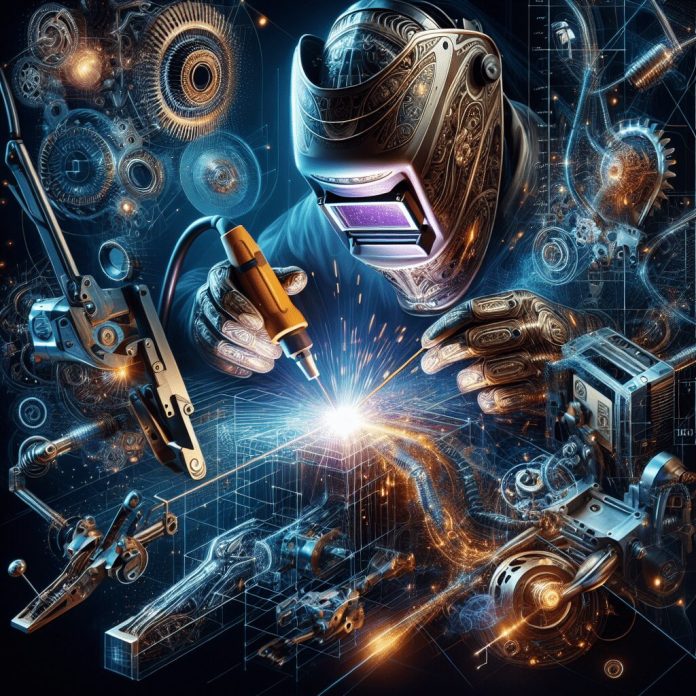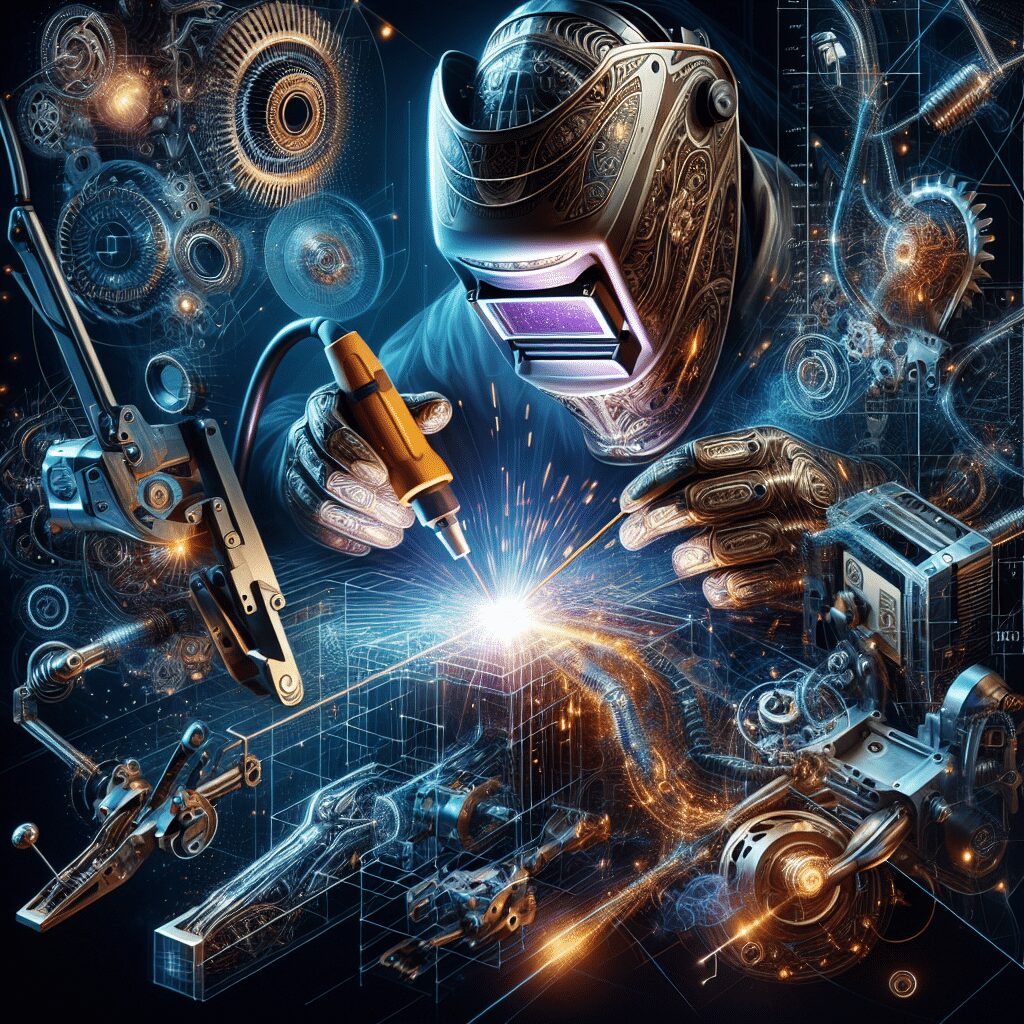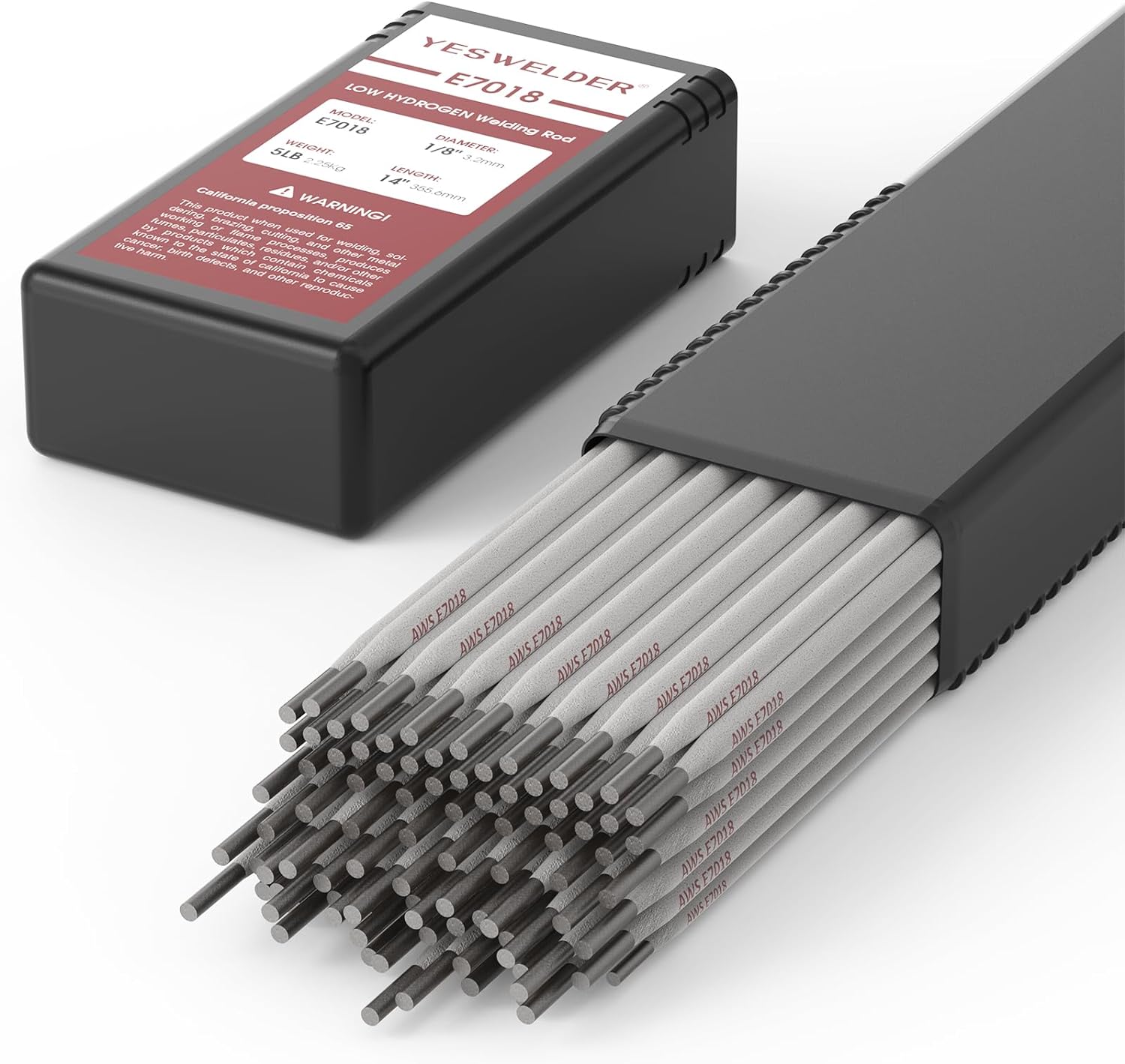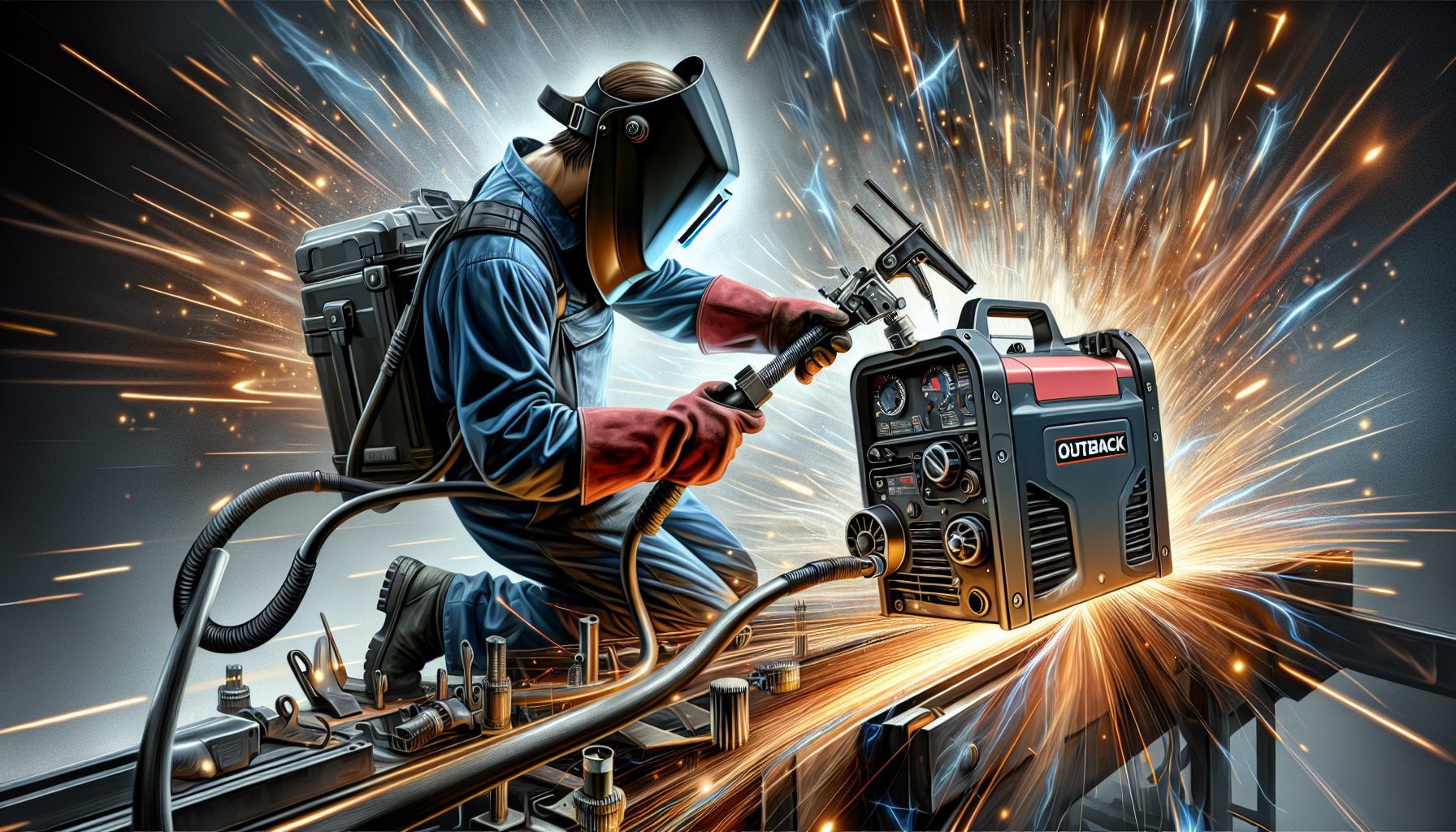Have you ever wondered about the latest innovations in welding technology? From traditional welding techniques to cutting-edge advancements, the world of welding has been continuously evolving. In this article, we will explore some of the most recent innovations in welding technology, including advancements in automation, augmented reality, and additive manufacturing. So, grab your welding mask and get ready to discover the exciting developments shaping the future of welding.
1. Laser Welding
Laser welding is a cutting-edge technology that utilizes laser beams to join or fuse materials together. This process involves directing the laser beam onto the workpiece, causing the material to heat up and melt. As the molten material cools down, it solidifies, creating a strong bond between the two pieces.
1.1 Introduction to Laser Welding
Laser welding has become increasingly popular due to its precision and efficiency. It offers numerous advantages over traditional welding techniques, making it a preferred choice in various industries. This technique utilizes a high-energy laser beam to melt and join materials, resulting in a clean and precise weld.
1.2 Advantages of Laser Welding
Laser welding offers several notable advantages. Firstly, its precise welds result in minimal distortion and reduce the need for subsequent machining or finishing processes. Additionally, this technology provides high welding speeds, allowing for increased productivity and reduced production time. Laser welding is also highly versatile, capable of joining a wide range of materials, including metals, plastics, and even dissimilar materials.
1.3 Applications of Laser Welding
Laser welding finds applications in various industries, including automotive, aerospace, electronics, and medical devices. Its precision and cleanliness make it suitable for producing intricate components, such as thin sheet metal parts and microelectronics. Laser welding is also commonly used for sealing packages, fabricating medical implants, and welding electrical components.
1.4 Future Developments in Laser Welding
The future of laser welding looks promising, with ongoing research and development efforts aimed at further improving the technology. Some areas of focus include enhancing the power and beam quality of lasers, developing advanced control systems for more precise welding, and exploring new applications in emerging industries. Additionally, efforts are being made to improve the efficiency and cost-effectiveness of laser welding systems, making them more accessible to a wider range of applications.
2. Friction Stir Welding
Friction stir welding (FSW) is a solid-state welding process that creates high-quality, defect-free welds by frictional heating and plastic deformation. This innovative technique uses a non-consumable tool, typically a rotating pin or probe, to generate heat and mechanically stir the material together.
2.1 Introduction to Friction Stir Welding
Friction stir welding is a relatively new welding technique that has gained attention for its ability to produce high-strength welds in materials that are typically difficult to weld, such as aluminum and other non-ferrous alloys. Unlike traditional welding methods that involve melting the material, FSW creates a solid-state bond, resulting in superior mechanical properties and reduced distortion.
2.2 Advantages of Friction Stir Welding
Friction stir welding offers several advantages over conventional welding techniques. Firstly, it eliminates the need for filler materials and shielding gases, making it a cost-effective and eco-friendly option. FSW also produces welds with excellent mechanical properties, including high tensile strength and fatigue resistance. Additionally, this process can join materials of different thicknesses and compositions, expanding its versatility.
2.3 Applications of Friction Stir Welding
Friction stir welding finds applications in various industries, including automotive, aerospace, shipbuilding, and construction. It is commonly used for joining aluminum components, such as body panels in automobiles and aircraft structures. FSW is also employed in the fabrication of heat exchangers, pressure vessels, and pipes, where its tight and leak-free joints are highly desirable.
2.4 Future Developments in Friction Stir Welding
Researchers are continuously exploring ways to improve friction stir welding technology. Current efforts focus on enhancing the process parameters, tool design, and material compatibility to expand the range of applications. Additionally, advancements in robotic automation and control systems are being pursued to increase the efficiency and accuracy of FSW. As this technology evolves, it has the potential to revolutionize welding in industries where high-quality and efficient joining is vital.
3. Electron Beam Welding
Electron beam welding (EBW) is an advanced welding method that utilizes a focused beam of high-velocity electrons to join materials. The electron beam, generated by accelerating electrons through an electric field, generates heat upon contact with the workpiece, leading to localized melting and fusion.
3.1 Introduction to Electron Beam Welding
Electron beam welding has gained popularity for its ability to provide high-quality welds with minimal distortion. Its focused and concentrated energy allows for precise control over the heat input, resulting in deep penetration and narrow weld zones. This technology is often used for joining materials that are challenging to weld using traditional methods, such as refractory metals and dissimilar alloys.
3.2 Advantages of Electron Beam Welding
Electron beam welding offers several advantageous features. Its non-contact nature eliminates the need for filler materials and shielding gases, resulting in cleaner and more precise welds. EBW produces welds with high depth-to-width ratios, enabling deep penetration without excessive heat input. This technique is also capable of welding thick sections with minimal distortion and a narrow heat-affected zone.
3.3 Applications of Electron Beam Welding
Electron beam welding finds applications in various industries, including aerospace, automotive, defense, and power generation. It is commonly used for critical aircraft components, such as turbine blades, rocket engine nozzles, and fuel tanks. Additionally, EBW is employed in the automotive industry for joining transmission components and manufacturing high-performance exhaust systems.
3.4 Future Developments in Electron Beam Welding
The future of electron beam welding focuses on improving process efficiency and expanding its capabilities. Ongoing research aims to enhance beam quality, increase welding speeds, and develop advanced control systems for improved process stability and accuracy. Additionally, efforts are being made to optimize the integration of electron beam welding with other manufacturing processes, such as additive manufacturing, to unlock new possibilities in design and production.
4. Ultrasonic Welding
Ultrasonic welding is a well-established joining technique that utilizes high-frequency mechanical vibrations to create solid-state bonds between materials. This process involves applying pressure and high-frequency vibrations to the interface of the workpieces, causing localized heating and fusion.
4.1 Introduction to Ultrasonic Welding
Ultrasonic welding is widely recognized for its ability to produce fast and reliable welds without the need for additional consumables. It is commonly used for joining thermoplastics, as well as non-ferrous metals and even certain ceramics. This technique provides excellent repeatability and precise control over the welding parameters, making it ideal for high-volume production.
4.2 Advantages of Ultrasonic Welding
Ultrasonic welding offers numerous advantages that make it a preferred choice in various industries. Firstly, it provides strong and consistent welds with high peel and shear strength. Additionally, this process does not require the use of adhesives, solvents, or additional materials, resulting in cost savings and simplified production processes. Ultrasonic welding is also a clean and environmentally friendly method, as it produces minimal smoke, fumes, or emissions.
4.3 Applications of Ultrasonic Welding
Ultrasonic welding finds applications in industries such as automotive, electronics, medical devices, and packaging. It is commonly used for joining plastic components in the automotive industry, such as interior trim panels and lighting fixtures. In the electronics field, ultrasonic welding is utilized for bonding wires, sealing connectors, and assembling printed circuit boards.
4.4 Future Developments in Ultrasonic Welding
The future of ultrasonic welding involves advancements in equipment design, process monitoring, and material compatibility. Efforts are being made to develop new ultrasonic welding techniques that can join dissimilar materials and overcome the limitations of traditional methods. Additionally, research is focused on improving the efficiency and speed of ultrasonic welding processes, enabling its use in a broader range of applications.
5. Magnetic Pulse Welding
Magnetic pulse welding (MPW) is an innovative solid-state joining technique that utilizes controlled magnetic forces to create high-speed impacts between two workpieces. This impact results in instantaneous deformation and localized melting, leading to the formation of a metallurgical bond.
5.1 Introduction to Magnetic Pulse Welding
Magnetic pulse welding is known for its ability to achieve high-speed and reliable welds without the need for heat input. The process involves generating a magnetic field that rapidly accelerates one workpiece towards the other, creating a collision and subsequent bonding. This technique is particularly suitable for joining dissimilar materials, including metals and non-metals.
5.2 Advantages of Magnetic Pulse Welding
Magnetic pulse welding offers several advantages over conventional welding techniques. Firstly, it allows for the joining of dissimilar materials without the need for surface preparation or interlayers. MPW also enables the bonding of thin and fragile materials, as the process does not subject the workpieces to excessive heat or mechanical stress. Furthermore, this technique offers high production rates and energy efficiency.
5.3 Applications of Magnetic Pulse Welding
Magnetic pulse welding finds applications in various industries, including automotive, electronics, and manufacturing. It is commonly used for joining electrical connectors, as well as tubes and pipes in the automotive and HVAC industries. MPW is also utilized for joining aluminum and copper conductors in the electrical power transmission and distribution sector.
5.4 Future Developments in Magnetic Pulse Welding
Future developments in magnetic pulse welding aim to enhance the process efficiency and expand its range of applications. Research is focused on optimizing the magnetic pulse parameters, tool design, and workpiece preparation methods to achieve stronger and more reliable welds. Additionally, efforts are underway to develop advanced modeling and simulation techniques to improve the predictive capabilities of MPW and enable its integration into automated manufacturing systems.
6. Plasma Arc Welding
Plasma arc welding (PAW) is a precise and versatile welding technique that utilizes a highly concentrated and electrically conductive plasma arc to join materials. The arc is generated between an electrode and the workpiece, ionizing the gas and creating an intense heat source for melting and fusing the materials.
6.1 Introduction to Plasma Arc Welding
Plasma arc welding combines the advantages of both Tungsten Inert Gas (TIG) welding and shielded metal arc welding (SMAW). It offers higher welding speeds and deeper penetration compared to TIG welding while providing better control and stability than SMAW. PAW is particularly suitable for joining thin materials and performing intricate welds.
6.2 Advantages of Plasma Arc Welding
Plasma arc welding offers several advantages that make it a preferred choice in various applications. Firstly, it provides high welding speeds, resulting in increased productivity and reduced production time. PAW possesses excellent arc stability and control, enabling precise and repeatable welds. Additionally, this technique can weld a wide range of materials, including stainless steel, aluminum, and even exotic alloys.
6.3 Applications of Plasma Arc Welding
Plasma arc welding finds applications in industries such as aerospace, automotive, and manufacturing. It is commonly used for joining components in the aerospace sector, including aircraft engine components, turbine blades, and fuel tanks. Additionally, PAW is employed in the automotive industry for welding exhaust systems, chassis components, and body panels.
6.4 Future Developments in Plasma Arc Welding
The future of plasma arc welding revolves around advancements in process control, automation, and material compatibility. Efforts are being made to develop intelligent power sources and control systems to enhance the arc stability, control, and reproducibility. Additionally, research is focused on expanding the capabilities of plasma arc welding to include new materials, such as advanced composites and dissimilar alloys.
7. Resistance Welding
Resistance welding is a widely used joining process that involves the application of heat and pressure to create a weld between materials. This technique utilizes the electrical resistance generated when two workpieces are brought into contact under pressure and subjected to an electric current. The resistance to the current flow generates heat, which melts and fuses the materials together.
7.1 Introduction to Resistance Welding
Resistance welding is known for its simplicity, reliability, and efficiency. It is widely used for high-volume production due to its fast welding speeds and minimal heat-affected zone. This process can be easily automated, making it suitable for mass production applications. Resistance welding is commonly used for joining metals, especially in industries such as automotive, appliance manufacturing, and construction.
7.2 Advantages of Resistance Welding
Resistance welding offers several advantages over other welding methods. Firstly, it provides fast welding speeds, resulting in high productivity and reduced production costs. The absence of consumables and filler materials contributes to its cost-effectiveness. Additionally, resistance welding produces strong and durable welds with excellent mechanical properties.
7.3 Applications of Resistance Welding
Resistance welding finds applications in various industries for different applications. In the automotive industry, it is used for welding body panels, exhaust systems, and fuel tanks. In appliance manufacturing, resistance welding is employed for joining components in refrigerators, washing machines, and HVAC systems. It is also commonly used in construction for welding reinforcing bars, wire mesh, and other structural elements.
7.4 Future Developments in Resistance Welding
The future of resistance welding is focused on improving process monitoring and control systems to ensure consistent and high-quality welds. Research efforts are aimed at optimizing electrode design, power delivery, and process parameters to achieve greater efficiency and cost-effectiveness. Additionally, there is a growing interest in exploring resistance welding for joining advanced materials such as composites and dissimilar alloys.
8. 3D Printing in Welding
3D printing, also known as additive manufacturing, has emerged as a revolutionary technology in various industries. When combined with welding, it offers new opportunities for the fabrication of complex and customized components. 3D printing in welding involves depositing layers of metal or metal matrix composite materials, then using a welding process to bond these layers together.
8.1 Introduction to 3D Printing in Welding
3D printing in welding combines the benefits of additive manufacturing, such as design freedom and customization, with the strength and integrity of welded joints. This process allows for the creation of intricate geometries and unique structures that are difficult or impossible to produce using traditional manufacturing methods. By strategically depositing materials and applying welding techniques, functional parts with tailored properties can be fabricated.
8.2 Advantages of 3D Printing in Welding
3D printing in welding offers several advantages over conventional manufacturing processes. Firstly, it enables the production of complex parts with internal features and customized properties, eliminating the need for assembly or post-processing. This technology also minimizes material waste and reduces the overall weight of the final product. Additionally, 3D printing in welding allows for on-demand production, making it suitable for low-volume and prototype manufacturing.
8.3 Applications of 3D Printing in Welding
3D printing in welding finds applications in various industries, including aerospace, automotive, and healthcare. In aerospace, this technology is used to manufacture turbine blades, structural components, and heat exchangers with optimized performance. In the automotive industry, 3D printing in welding enables the production of lightweight and high-strength parts, such as engine components and suspension systems. In healthcare, it is utilized for fabricating customized implants, prosthetics, and surgical instruments.
8.4 Future Developments in 3D Printing in Welding
The future of 3D printing in welding lies in advancing the materials and processes to further enhance the capabilities and performance of additive manufacturing. Ongoing research aims to develop new metal powders, alloys, and composites with improved properties specifically tailored for 3D printing in welding. Additionally, efforts are being made to refine the process parameters, optimize build quality, and increase production speeds, paving the way for larger-scale adoption of this technology.
9. Remote Welding Technology
Remote welding technology allows for the execution of welding operations from a distance, utilizing robotic systems and advanced communication technologies. This technology enables the welding of complex and hazardous structures without human intervention, enhancing safety, productivity, and efficiency.
9.1 Introduction to Remote Welding Technology
Remote welding technology combines the capabilities of robotic welding systems with advanced control and communication systems. It allows welding operations to be performed in challenging environments or confined spaces where direct human access may be difficult or unsafe. With the use of cameras, sensors, and real-time communication, skilled welders can remotely control and monitor the welding process.
9.2 Advantages of Remote Welding Technology
Remote welding technology offers several advantages in terms of safety, productivity, and quality. Firstly, it eliminates the need for welders to work in hazardous environments, reducing the risk of injuries and exposure to harmful substances. Remote welding also improves productivity by enabling continuous operation without the need for frequent breaks or shift changes. Furthermore, this technology ensures consistent quality and accuracy, as the welding parameters can be precisely controlled and monitored.
9.3 Applications of Remote Welding Technology
Remote welding technology finds applications in various industries, including oil and gas, nuclear power, and shipbuilding. In the oil and gas industry, this technology is used for welding pipelines and offshore structures, where direct access is challenging. In the nuclear power sector, remote welding enables the repair and maintenance of reactor components in radioactive environments. Shipbuilding companies utilize remote welding for welding ship hulls and other large-scale structures.
9.4 Future Developments in Remote Welding Technology
The future of remote welding technology lies in improving the capabilities and functionalities of robotic systems, as well as the integration of artificial intelligence and advanced vision systems. Ongoing research aims to enhance the dexterity and mobility of robotic welding systems to enable welding in even more challenging environments. Additionally, developments in real-time communication technology, such as 5G networks, will enhance the responsiveness and reliability of remote welding operations.
10. Augmented Reality Welding
Augmented reality (AR) welding combines the real-world welding process with virtual overlays and information, providing welders with enhanced visualization, guidance, and training. This technology overlays digital information, such as welding parameters, welding paths, and visual cues, onto the physical welding environment, improving accuracy, efficiency, and quality.
10.1 Introduction to Augmented Reality Welding
Augmented reality welding utilizes smart glasses, headsets, or helmet-mounted displays to overlay virtual information onto the welder’s field of view. This information can include welding parameters, real-time feedback on weld quality, and visual aids to guide the welder’s movements. By combining the real-time view of the welding environment with virtual elements, AR welding enhances the welder’s situational awareness and reduces errors.
10.2 Advantages of Augmented Reality Welding
Augmented reality welding offers several advantages over traditional welding methods and even some other advanced welding technologies. Firstly, it provides real-time visual guidance, reducing the need for physical templates or measurements. This technology can also improve welder training and skill development by providing virtual simulations and real-time feedback on technique. Furthermore, AR welding enhances productivity by reducing rework and inspection time, as weld quality can be monitored during the process.
10.3 Applications of Augmented Reality Welding
Augmented reality welding finds applications in various industries, including manufacturing, construction, and maintenance. In manufacturing, AR welding is used for assembling complex structures, such as aircraft fuselages and heavy machinery, ensuring precision and accuracy. In construction, this technology assists welders in fabricating structural components and joining large-scale assemblies. Maintenance and repair operations can also benefit from AR welding, as it provides real-time guidance and documentation for complex repairs.
10.4 Future Developments in Augmented Reality Welding
The future of augmented reality welding focuses on further enhancing the capabilities and functionalities of AR systems, as well as exploring new applications. Ongoing research aims to develop more advanced tracking and sensing technologies to improve the accuracy and robustness of augmented reality overlays. Additionally, advancements in machine learning and data analytics will enable the extraction of valuable insights and predictive capabilities from the vast amount of data generated during AR welding operations.




































